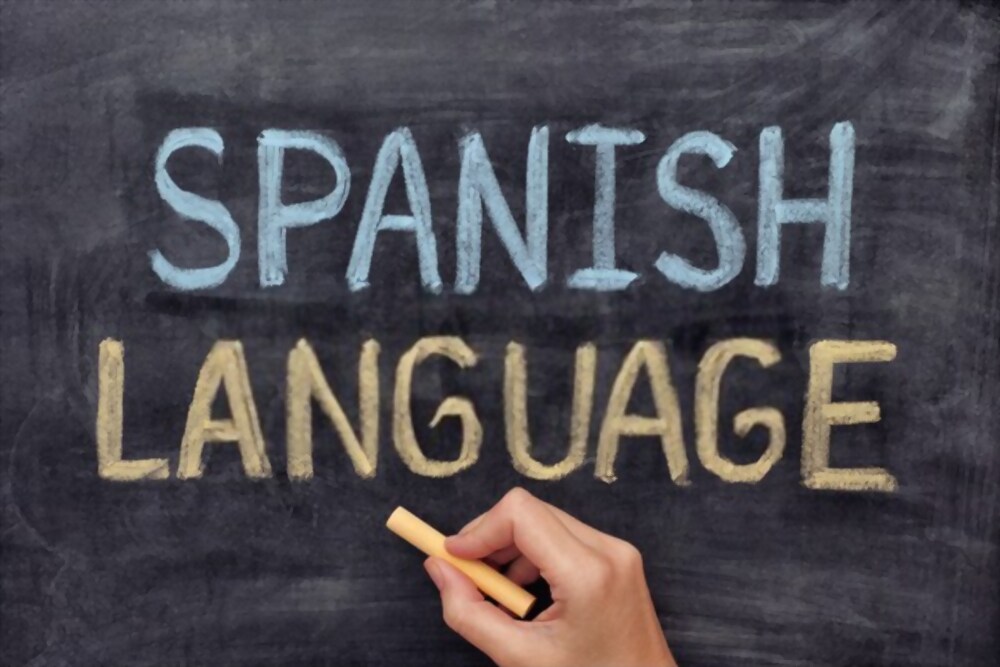
While the Spanish language is amongst the most popular languages on the planet, those raised outside of the Hispanosphere are usually unaware of just how interesting and unique the Spanish language is. With ties to both the ancient Roman empire and the Arabic world, as well as a worldwide reach that encompasses numerous dynamic cultures, a study of Spanish is packed full of insights into cultures, both modern and ancient, near and far.
To give you a small look into the richness of the Spanish language's culture and history, we are going to briefly touch on ten interesting Spanish language facts. These Spanish language facts should help you understand how compelling the Spanish language is and how much more there is to learn.
10 Facts About the Spanish Language
These 10 facts about the Spanish language are just the tip of a much more interesting iceberg. For example, in this article, we will briefly touch on the period of Arabic Spain, where the name Al-Andalus (Andalusia) derives from. While we touch on this period of Spain, we do not talk about the Alhambra, El Cid, or the other countless icons that truly make this period worth studying.
The hope is that these Spanish language facts will motivate you to learn all about the Spanish language, and hopefully to take up the language yourself if you haven’t already.
1) Spanish Comes From the Latin Spoken During the Roman Empire
There is no simple answer to the question, "How old is the Spanish language?" This is because Spanish evolved from Latin, and thus there is no precise moment where Latin ended, and Spanish began. Like French, Italian, Romanian, and other Romance languages (languages that came from Latin), the transition was gradual and sporadically influenced by migrations and invasions from various Germanic or Arabic groups.
To put it simply, when the Western Roman Empire fell, Europe was broken up into many smaller countries. During this period of relative cultural isolation, the dialects of each region began to diverge increasingly, and languages like Spanish and Italian began to take on their own identity.
2) So Just How Old is the Spanish Language?
While the gradual shift from Latin into what we understand as Spanish makes it impossible to pick an exact date, many experts will at least give a general nod to the 13th century Kingdom of Castile for establishing the written form of what became modern Spanish. The first grammar book was published in 1492, the same year Columbus set sail.
So roughly how old is the Spanish language? This would make an identifiable version of modern Spanish at least 700 years old.
3) Arabic influenced Spanish
An exploration of Spanish language history facts will eventually bring you to the period of Arabic Spain. This is one of the most exciting, dynamic, and controversial periods in Iberian history. The stories of the wars between the Visigoths and Moors and the rich culture that was brought in during that period helps to give Spain a unique feel amongst European countries. From the beginning of the 700's to the ultimate expulsion of the Arabs and beginning of the Inquisition at the end of the 1400's, you had 700 years of Arabic influence on the Spanish culture and language.
Today Spanish still retains roughly 8,000 Arabic words (like almendra for almond), and this makes Arabic the second most influential language in Spanish after Latin.
4) Spain’s Don Quixote is Considered the First Modern Novel
Another interesting tidbit for those focusing on the Spanish language history facts is the novel of Don Quixote. Considered to be the first modern novel, as well as one of the earliest works in early modern Spanish, Don Quixote is a tale of an aging man who decides to become a questing knight. The cherished piece of Spanish culture became a significant influence on future works, such as those of Alexander Dumas and Mark Twain.
Each generation tends to read something different in the tale of Don Quixote de la Mancha.
5) Use of the Spanish Language is Growing
Spanish language popularity has been on the rise for a number of reasons around the globe. Not only is the use of the Spanish language greater due to the simple fact of general population growth, but it is also becoming more significant as a percentage of the world languages spoken. While currently Spanish language popularity already makes it the world’s second most spoken language at 6% of people, some estimates say that use of the Spanish language is set to grow to 10% in a generation or two.
6) Countries Make Official Use of the Spanish Language
While the use of the Spanish language is not rare in countries where it is not the official language, 31 nations have it as the official state language. These countries can be found in Europe, Africa, and across the Americas. This means that Spanish is used in official correspondence, in legal matters, and a whole range of other necessary societal functions.
7) The Spanish Royal Academy has Reign Over the Language
Located in Madrid, the Real Academia Española (RAE) or Spanish Royal Academy is tasked with caring for and guiding the official evolution of the language. The Academy puts out the dictionaries and grammar books for Spanish, and has done so since 1713. Its motto is: 'To cleanse, fix and enhance'.
Another little factoid: Apparently, the inverted punctuation marks found only in Spanish is the result of the Academy.
8) Spanish is a Very Phonetic Language
Unlike English, and many other languages, the spelling of a word in Spanish almost always correlates closely with the way that it is spelled. While different regions will have variations in the way they pronounce words, letters are typically always pronounced consistently.
9) Spanish is the 3rd Most Common Language Online
Currently, both the number of users online speaking Spanish and the amount of online content in Spanish are growing at an incredible rate. As access to the internet becomes easier for thousands across central and South America, these numbers are expected to continue to climb.
Estimated percentage of internet users in 2020:
- English 25.9%
- Chinese 19.4%
- Spanish 7.9%
- Arabic 5.2%
Estimated percentage of Online content in 2020:
- English 59.3%
- Russian 8.4%
- Spanish 4.2%
- German 2.9%
These numbers are not going to be exact, but they show the growing prominence of Spanish in the digital realm.
10) The US has as Many Spanish Speakers as Spain
With Spanish being taught in every US High School, millions of US citizens speaking Spanish at home, and the large amount of northward immigration in the Americas, it is no surprise that by 2050 the US is expected to become home to the largest Spanish speaking population on the planet. In fact, the United States already has roughly the same number of Spanish speakers (about 45-50 million) in it than Spain (About 46 Million)!
There is Always More to Learn
Learning all about the Spanish language you will discover stories of tragedy, war, love, and joy. Spanish has touched people on every continent and continues to live on and grow all over the world. Spanish language facts only give us a small window into how truly amazing this language is. Continue to learn more and you will be amazed at what you discover.

